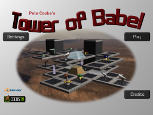- Glidos owes a great debt to Fabio Barros for developing OpenGlide and for releasing the source. It is a beautifully crafted piece of software, and it works (which is always a bonus). When Glidos is running, much of what you see is due to OpenGlide.
- This project would have been impossible without the assistance of the residents of the news group openwatcom.users.c_c++, particularly Stephen Howe, Michal Necasek and Jonathan de Boyne Pollard. Detailed answers to many stupid questions were supplied tirelessly.
- I thank Volker Jung of (http://www.laraunlimited.com) for providing very generously towards the support of Glidos, particularly for our German users. He supplied all the German translations for the program and the website, and also much direct support to users. He was one of the very first testers of the initial version of Glidos, and gave a great deal of helpful feedback. Volker's site should be thought of as the main point of contact for German users.
- I thank my friend Robin Watts for help sorting out the window handling, and suggesting enhancements - also for guessing at the cause of certain bugs, and being right (as usual).
- Without Dr Richard Cranium's (Dracman) Tomb Raider help pages, I may not have developed Glidos. It was while reading his guide to using later Voodoo cards with Tr1 that I realised Glidos was possible.
- Terry Colligan gave me some very useful advice, early on, which I only later understood. Besides that, many of the games of the late DOS era couldn't have been written without Terry's DOS/4G extender.
- Its also nice to thank my old mate Bryan Scattergood for digging out a, long time unused copy of Watcom C/C++. Especially as Watcom is next to impossible to obtain now. During the years when I used to work with Bryan, he was also a good source of advice on programming style in general.
- In the later stages of development, residents of the news group alt.games.tombraider helped considerably. In most cases I don't know their real names, just their handles, but Cookiebear, JJ, Mustang, McGrandpa, Stiletto, x6461, to mention a few helped significantly in weeding out the main problems with the first few versions of Glidos. Dracman also helped considerably at this stage, sorting out many user's problems, and providing support on his web pages.
- This product includes software developed by the OpenSSL Project for use in the OpenSSL Toolkit (http://www.openssl.org/)
- Michael McCollum, also going by the handle McGrandpa, has been the main beta tester for Glidos, especially on Windows XP. Many little niggles and bugs would not have been corrected without his help.
- Greg aka Stiletto. He finds things on the web. I don't know how he finds things, but if its there he'll find it. A few of the things he's found were essential to the development of Glidos.
- Vlad. ROMASCANU. The creater of VDM Sound and general genius. For a long time I had severe problems running Descent II through Glidos on Windows 2000 and Windows NT. Eventually I made the wise decision to ask some questions on the VDM Sound forum, and discovered that it is the place to find out about DOS emulation. I'm extremely grateful for Vlad's freely offered knowledge and ideas. The discussions have opened up a whole new possibility for the way Glidos works.
- CraigG from the Vogons forum has turned out to be the most prolific Glidos and OpenGLide tester of all time. Much thanks goes to Craig for introducing me to a whole slew of new games, and providing a legacy of test results that will keep me busy for eternalty.
- Vince Moulton painstakenly worked through the whole of Tomb Raider, noting every position where the Play Station version used special atmospheric audio tracks. This was an essential step to developing the audio pack for restoring those sounds.
- Jason Ioannides reproduced the Glidos web page logo. His version, constructed with PaintShop Pro, looks much better than my original, made by cutting and pasting rectangles with Microsoft Paint.
- Ryan Sexton was the original reporter of the bug that led to the screen being cut off on the righthand side when using some AMD graphics cards, and then gave me weeks of back and forth help tracking it down.



